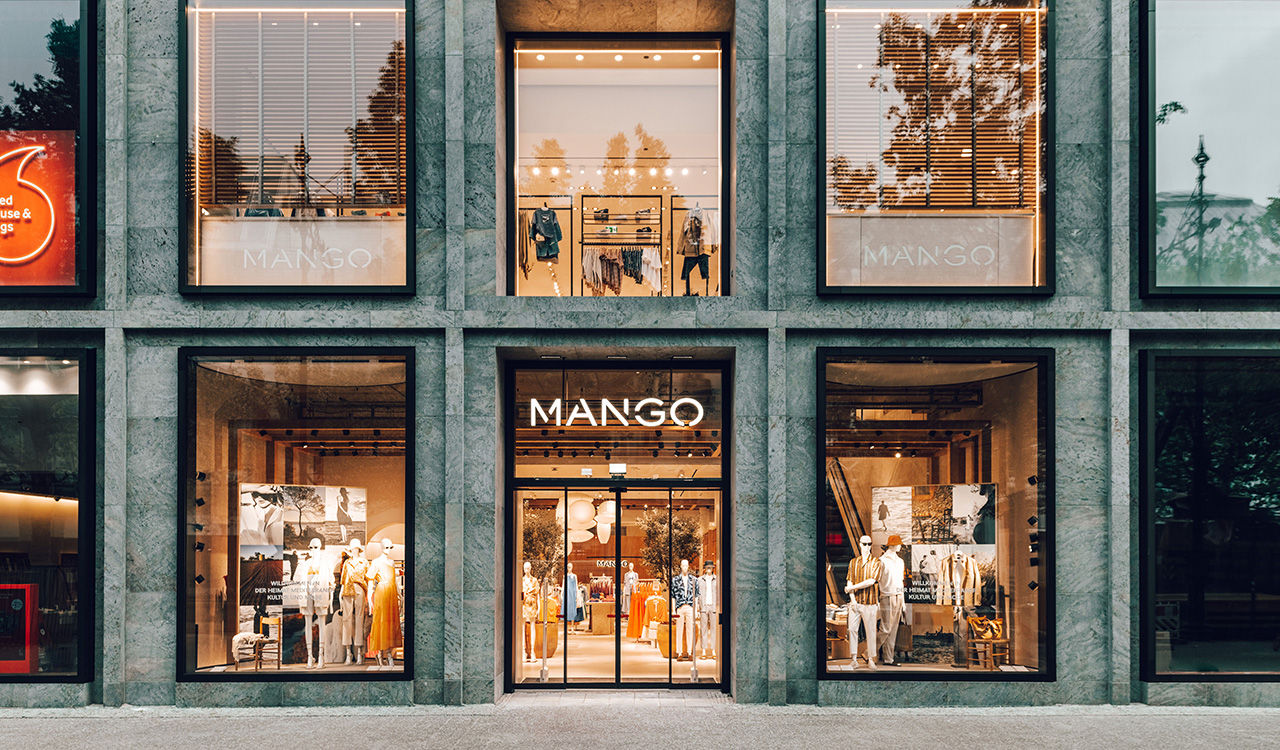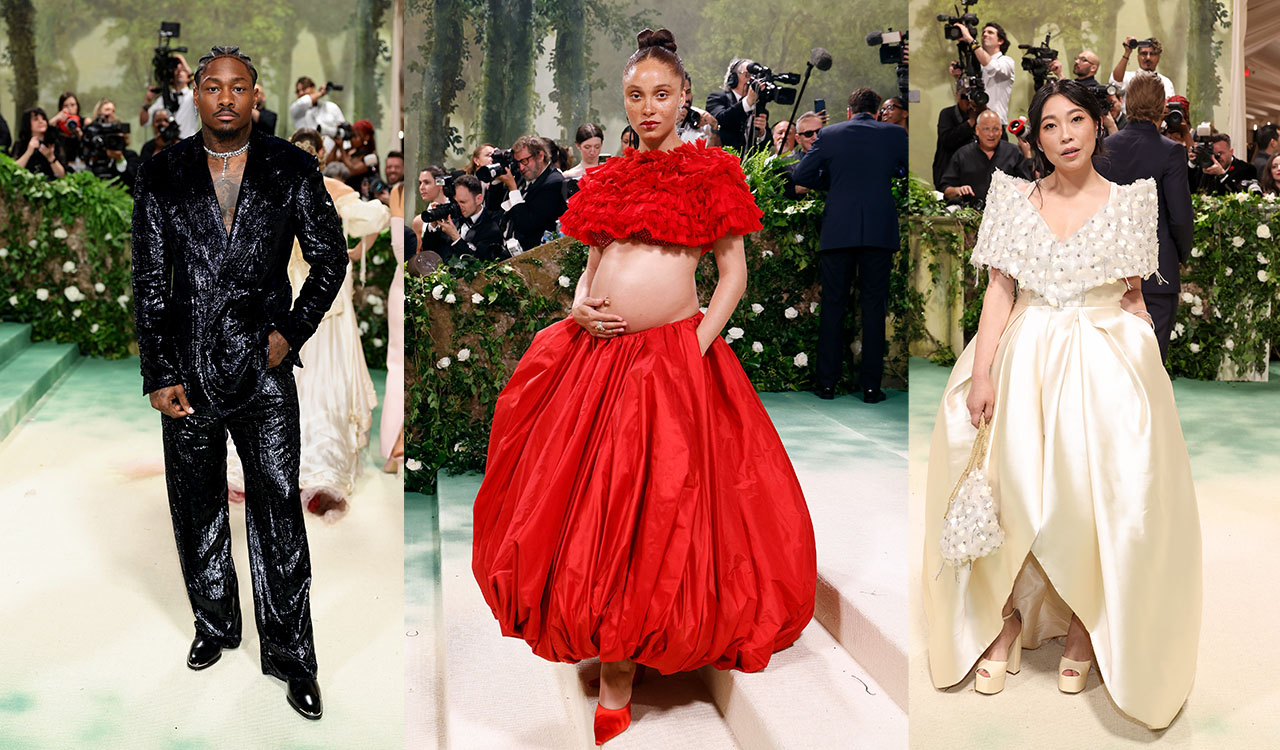In not-so-breaking news: Inditex and Mango look to the U.S. for growth. Mango is celebrating its 40th anniversary this year, and the brand is booming. And it’s not just about its stores. Online also soared to an all-time high of approximately $1.1 billion, which accounted for around a third of the group’s total revenues. International business was 77 percent of Mango’s total revenues last year and for the first time, its U.S. business was one of Mango’s top five markets in terms of sales.
Mango is aiming to make the U.S. its third-largest market internationally and has ambitious plans following its latest stellar financial update. Inditex is opening 192 new stores, refurbishing, or enlarging its current estate, and upgrading its ecommerce operation, with a 5 percent space increase forecast annually over the next two years.
Spice Girl Collaboration
Mango recently announced a new collaboration with LA-based Spice Girl-turned-designer Victoria Beckham on a collection of slip dresses, knitwear, and accessories. The Spanish retailer described the new line as “a perfect blend of classic British luxury” with prices expected to be higher than Mango’s typical offering but still a fraction of the retail price compared with items from Beckham’s own brand, which she launched in 2008.
Beckham said in a recent interview with WWD that she had opted to work with Mango to “speak to a wider audience in a way that feels relevant to my brand and retains my aesthetic and DNA.” The Victoria Beckham x Mango capsule follows previous collaborations with LA-based lifestyle brand Simon Miller and European influencer Camille Charrière and supports Mango’s new Strategic Plan, called 4E: ‘Elevate, Expand, Earn and Empower.’
Mango Targets U.S. Growth
Mango’s global ambition is to open as many as 500 new stores by 2026 in key locations including the U.S., Canada, France, Italy, Germany, the U.K., Poland, India and in its domestic Spanish market. That number includes 30 additional stores across North America, making the market its third largest.
“In a very competitive environment, Mango has managed to significantly increase its sales, achieving the best results in the company’s history,” CEO Toni Ruiz said. The company invested over $200 million last year, mainly in new stores and improved logistics and distribution centers. In all, it opened 130 new stores in 2023 and reformatted another 80, as it reached around 2,700 outlets in a total of 115 markets worldwide.
About 20 of the 130 stores Mango opened in 2023 were in the U.S. where it ignited expansion in May 2022 with a New York flagship store followed by expansion in Florida and further store openings in Texas, Georgia, and California. “Something has changed. Americans now have a different and better perception of European brands,” Ruiz said in an interview last year coinciding with the Spanish brand’s fresh focus on the U.S. as it shifted its growth strategy away from the Chinese market.
Mango Profits Soar
In its latest results, Mango reported net profits rose to $188.1 million, well above the $88.5 million achieved in 2022 and ahead of its own forecast, while its gross margin approached 60 percent in 2023 with the company carrying no net debt. Mango said that its sales had risen by 15 percent last year to exceed its forecast of $3.28 billion attributing its strong performance on party wear and fashion apparel for upscale shoppers less sensitive to higher price points. That focus also helped it differentiate from many of the international fashion discounters.” For many items, prices have not increased, but the overall price mix of our collection has,” Ruiz said. He also said through careful inventory control the company had reduced the amount of merchandise that it had to discount.
The plan is for Mango to reach total annual sales of nearly $4.4 billion and double its net profit by 2026. Ruiz also confirmed that Mango does not have any plans to list on the stock market and will not need new investors to fund the growth strategy that will likely cost the retailer in the region of $650 million.
Inditex Invests in Its Future
Not to be outdone, Zara-brand owner Inditex recently said that it would invest nearly $2 billion to bolster its logistics backbone amid strong sales growth that sent its share price up nearly 12 percent in the year to date. The Spanish fashion group said that it would invest the money in distribution centers over the next two years to capitalize on opportunities to boost European apparel and footwear sales.
Sales increased 8.6 percent year-on-year to $11.1 billion in the three months to January 31 this year — an acceleration from the previous quarter in part because the company has been gradually raising prices while shifting its emphasis to more upscale designs.
Chief executive Óscar García Maceiras hailed the importance of Inditex’s “rigorous” cost control in the past year as expenses increased at a lower percentage rate than sales growth and, in the final quarter, net income climbed by 23.5 percent to $1.4 billion.
In addition to the $1.9 billion spent on logistics, the retailer said it would also invest the same amount again this year in opening 192 new stores, refurbishing or enlarging its current estate, and upgrading its ecommerce operation, with a 5 percent space increase forecast annually over the next two years.
“The company thought it should add muscle for future expansion, for future growth,” Marcos López, Inditex’s capital markets director, told analysts on a call and said that the logistics investment will create new distribution centers in Spain for Zara, the Bershka brand, and footwear, as well as expanding an existing Zara hub in the Netherlands. The projects are expected to be operational by the second half of 2025.
While Zara has roughly 5,700 stores in more than 90 countries, most of its merchandise passes through Spanish distribution centers before reaching the shops or being distributed online.
No Stopping the Spanish
The performances of Inditex and Mango outperform Swedish rival H&M, which has changed leadership and is now looking to boost margins in a bid to get its performance back on track.
Spain’s apparel retailers seem to have scored better compared with their U.S. mass-market fashion competitors by finding that narrow niche between everyday fashion-forward and ubiquitous trendy. They are also not wedded to short-term trends or thinking. With North America now firmly in their sites, we expect to see more of both brands as they continue their upward trajectory.




